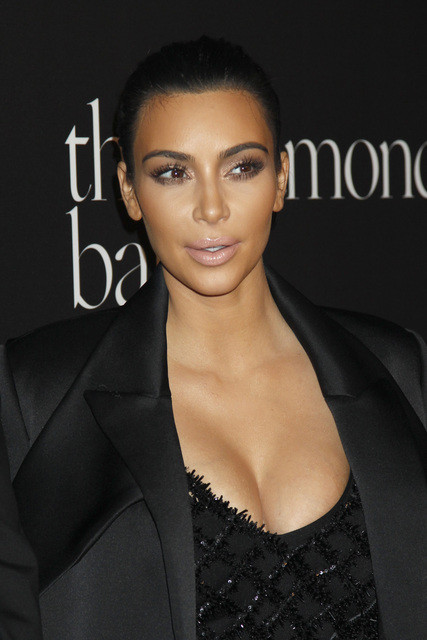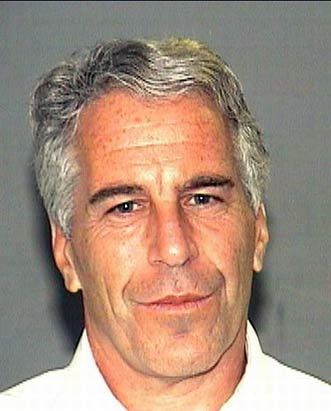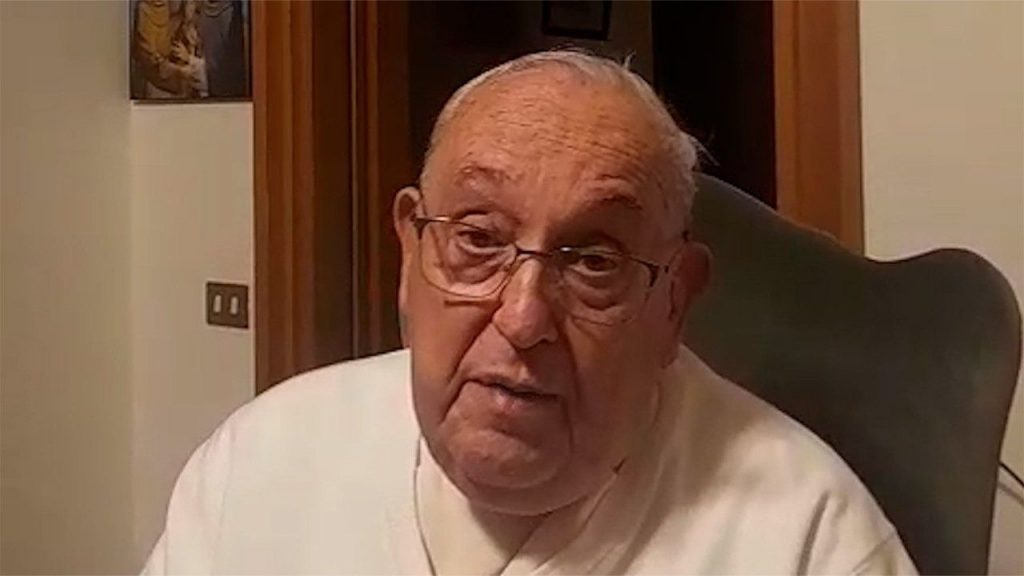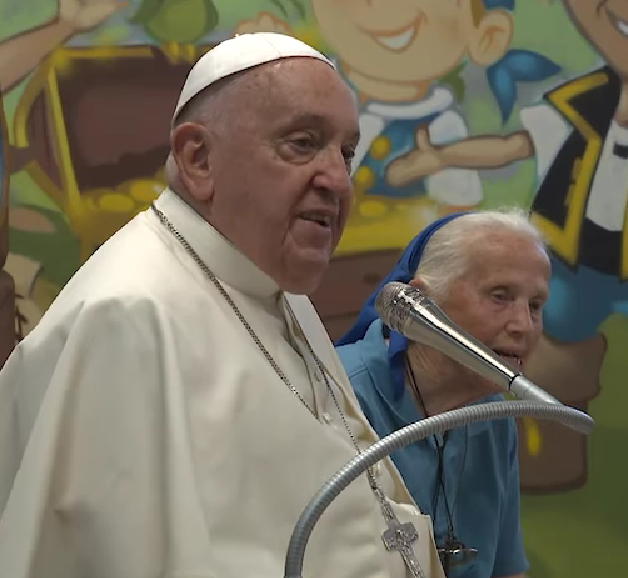Under the piercing beams of stage lights, a commanding figure takes center stage.
Shirtless and uninhibited, the man’s presence is raw and magnetic. His outstretched arms and expressive face radiate an almost primal energy—he’s not just performing, he’s embodying a force of nature.
The atmosphere is electric, signaling the beginning of something intense and transformative.
The Bison Appears: Power in Stillness
Suddenly, the spotlight shifts. A bison stands tall and majestic, its thick fur and curved horns a powerful contrast to the previous human scene.
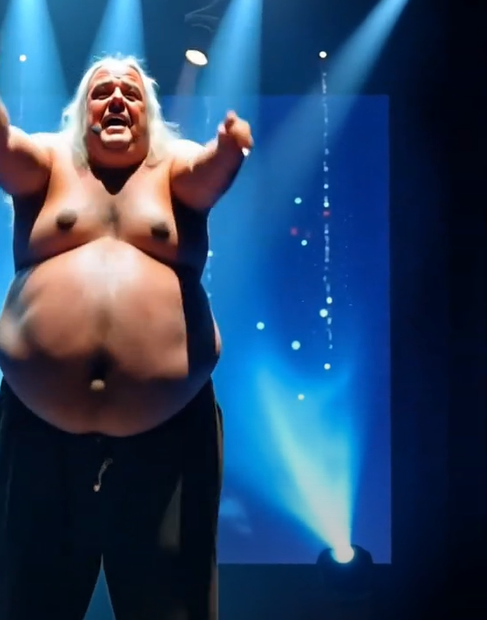
The bison doesn’t move, yet its presence commands the audience’s attention.
It represents strength, resilience, and ancient wisdom—qualities that feel deeply symbolic in the context of the performance.
Transformation in Motion: The Collapse
Back on stage, the human form is in motion again, but this time it’s more chaotic.
The body bends forward dramatically, almost collapsing under an invisible weight.
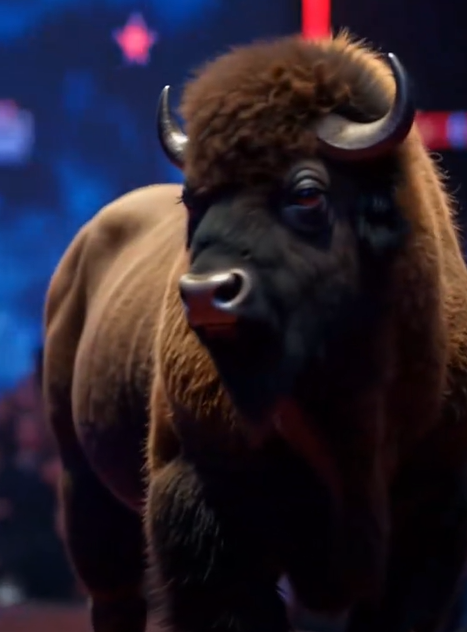
Smoke or mist swirls in the background as if the environment itself is reacting to the shift.
This moment marks a turning point—the transformation is underway. The man is no longer just himself; he is becoming something else.
The Charge of the Bison: Unleashing the Spirit
In a climactic moment, the bison charges forward. It’s no longer just standing still; it’s alive with motion, purpose, and untamed energy.
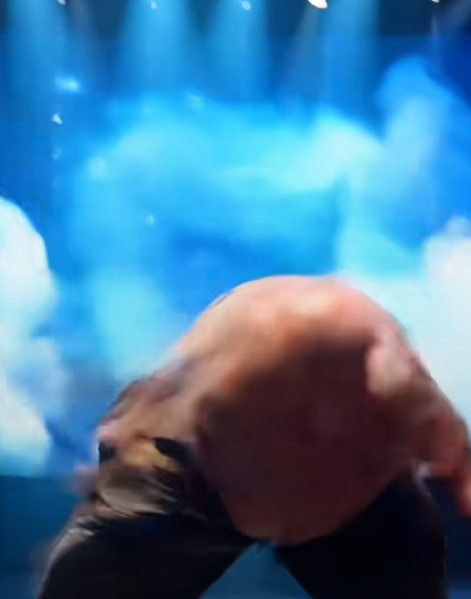
The red star backdrop and cheering crowd amplify the drama. This charge could symbolize liberation, raw instinct, or the full realization of inner power.
Whether literal or metaphorical, it’s a stunning finish to a deeply visceral performance.
A Performance that Transcends Form
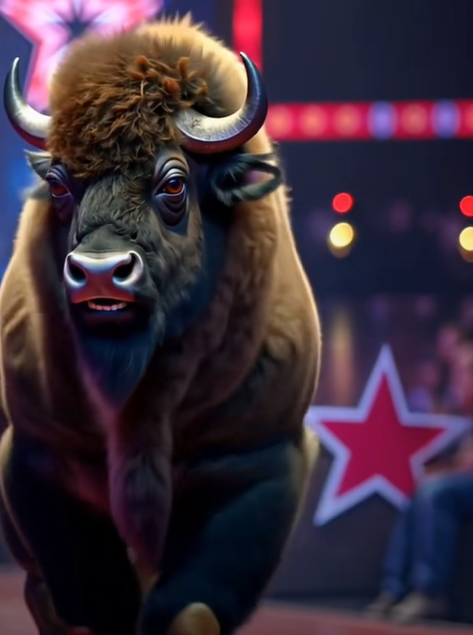
This performance appears to explore themes of transformation, primal instinct, and the blurred line between man and beast.
Through dramatic physicality and symbolic imagery, it leaves the audience questioning what lies beneath the surface of identity—and what happens when we let that inner force take the reins.

